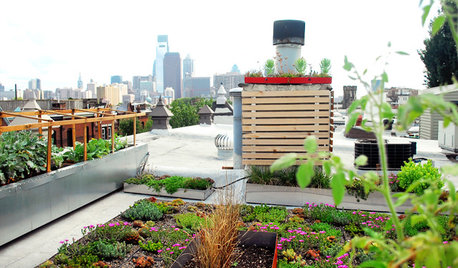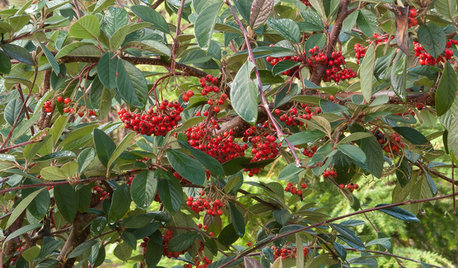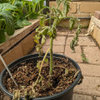Late Blight / spray milk
Hego
18 years ago
Related Stories

PAINTINGWhat to Know About Milk Paint and Chalk Paint — and How to Use Them
Learn the pros, cons, cost and more for these two easy-to-use paints that are great for giving furniture a vintage look
Full Story
HOME INNOVATIONSNow Approaching the Emerald City
Urbanites are spraying moss graffiti on walls and covering roofs in plants — and city regulators and designers are supporting the cause
Full Story
GARDENING GUIDESGreat Design Plant: Cotoneaster Lacteus
Parney cotoneaster is a low-maintenance, four-season shrub that offers great foliage, spring flowers and jewel-like berries
Full Story
DOORSCreative Ways With Barn-Style Doors
Considering jumping on the barn-door bandwagon? These examples in different styles offer inspiration aplenty
Full Story
CONTRACTOR TIPSLearn the Lingo of Construction Project Costs
Estimates, bids, ballparks. Know the options and how they’re calculated to get the most accurate project price possible
Full Story
GARDENING GUIDESGreat Design Plant: Milkweed
Quit cringing. This not-weed plant is a sight to behold in the garden, has a delicious vanilla scent and is a magnet for butterflies
Full Story
GARDENING GUIDESGreat Design Plant: Knock Out Roses
As glorious as their high-maintenance kin for a fraction of the work, Knock Out roses make even beginners look like garden stars
Full Story
MOST POPULARA Fine Mess: How to Have a Clean-Enough Home Over Summer Break
Don't have an 'I'd rather be cleaning' bumper sticker? To keep your home bearably tidy when the kids are around more, try these strategies
Full Story
HOUSEKEEPINGGet Those Carpet Stains Out: Best Nontoxic Methods for Spot Cleaning
Banish blotches the safe way with pantry staples, to get your rugs looking as clean as the day they came home
Full Story
PINKPint-Sized Design: Olivia's Pinkalicious Kids' Room
Fall in love with a 5-year-old girl's penny-pinching pink bedroom
Full StoryMore Discussions







carolyn137
HegoOriginal Author
Related Professionals
Deer Park Landscape Architects & Landscape Designers · Eden Prairie Landscape Architects & Landscape Designers · Erie Landscape Architects & Landscape Designers · Fillmore Landscape Architects & Landscape Designers · Manchester Landscape Contractors · Barrington Landscape Contractors · Costa Mesa Landscape Contractors · Hurricane Landscape Contractors · Salem Landscape Contractors · Tamarac Landscape Contractors · New Carrollton Landscape Contractors · Sun Valley Landscape Contractors · Bonita Siding & Exteriors · Bountiful Siding & Exteriors · Cherry Hill Siding & Exteriorscarolyn137
HegoOriginal Author
rw2238_gmail_com